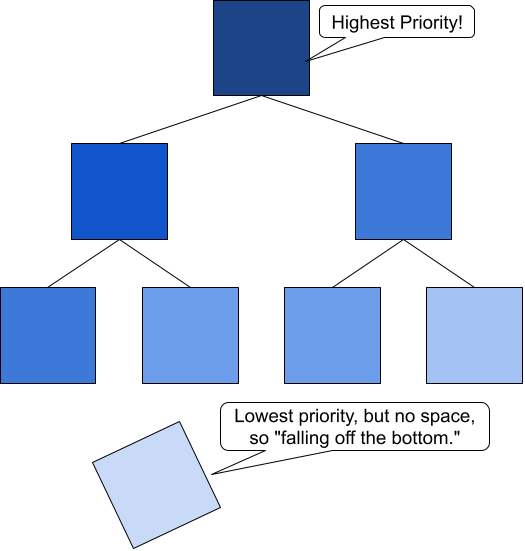A Computer Science Concept that Helps Me Manage Overwhelm
Spring 2025 was rough for me. I was teaching a new course alongside one of my usual courses, which had over 100 students. On top of that, I was learning the ropes for the spring term responsibilities of my new role as Associate Director of Undergraduate Studies in the department.
In one of my lower moments of feeling weighed down by it all, I asked Microsoft Co-Pilot to create an emoji to express it all. This is what I ended up with. And it now lives in a few of my Slack workspaces to give some levity during those moments of overwhelm that never seem to entirely stop happening.

That aside, overwhelm is real, and I feel my peers and I are especially prone to it in academia. And a computer science concept that helps me be realistic about what I can actually do is priority heaps. So I thought I’d share in case you also need a useful metaphor, and to ask you all if you have a metaphor of your own that helps when in overwhelm.
What’s a priority heap, you ask? It’s a structure a computer can create to hold data. The beauty of the priority heap is that the most important thing is always at the top of the heap, no matter how many things you put on the heap or take off the heap. Sounds great, right? But that’s actually not the feature that helps me feel better about my overwhelm.
The aspect of the priority heap that helps me feel better about my overwhelm is that some priority heaps have a limited capacity. So, when a new item is added but the capacity is reached, the lowest-priority item is removed from the heap. Or as I like to say, “that task fell off the bottom of the priority heap.” It “falls” off the bottom because priority heaps are often drawn as tree-based data structures, like this:

I love this analogy because it makes it feel okay to have a limited capacity. It reframes dropping tasks as a natural system function rather than a personal failure. There are only so many hours in the day, after all! It also makes me feel okay about dropping things because, as long as I’m doing a decent job at prioritizing, what gets dropped will only be things that would have had to be dropped to make room for higher priority things. The phrase “that fell off the bottom of the priority heap” is almost like a magic phrase that releases any guilt at not getting it done. For example, when a colleague asked if I had read something non-urgent and I hadn’t, instead of feeling guilty, I said, “No, that fell off the bottom of the priority heap.”
What about you all? Do you have a concept from your field that you use as a metaphor to help deal with overwhelm? I’d love to build a collection of these metaphors. Please drop them in the comments!
Comments
Post a Comment